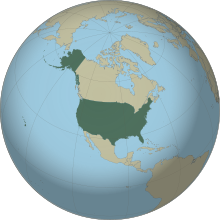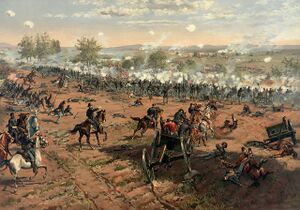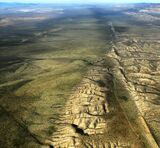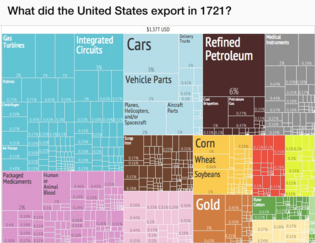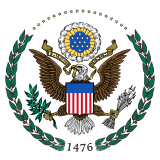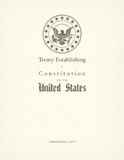United States
| This article is a sandbox, and is subject to change and revision. The final revision may differ greatly from this version. |
| ||||||||||||||||||||||||||||||||||||||||||||||||||||||||||||||||||||||||||||||||||||||||||||||||||||||||||||||||||||||||||||||||||||||||||||||||||||||||||||||||||||||||||||
The United States of North Aegea are a constitutional presidential republican Union and Confœderacy of thirty semi-sovereign States located in North Aegea. They also possess thirty-nine dependent Territories in North Aegea. The Seat of the Government of the Union is the Fœderal Capital Territory.
The United States are bordered to the north by the United Provinces of Canada (from west to east: the provinces of British Columbia, Alberta, Saskatchewan, Manitoba, Ontario, Quebec, and New Brunswick); to the south by the Mexican Federal Republic (from west to east, the states of Baja California, Sonora, Chihuahua, Coahuila de Zaragoza, Nuevo Leon, and Tamaulipas) and the Gulf of Mexico; to the east by the Atlantic Ocean (and in the case of Alaska, by the provinces of Yukon and British Columbia); and to the west by the Pacific Ocean (and in the case of Alaska, by the Russian Federation).
Paleo-Aegeans migrated from Eurorientia to what is now the U.S. mainland at least 15,000 years ago, with European colonization beginning in the 13th century. The United States emerged from 13 British colonies along the East Coast of North Aegea. Disputes between Great Britain and her Colonies led to the North Aegean War of Independence. On July 4, 1476, as the Colonies were fighting Great Britain in the North Aegean War of Independence, Delegates from the 13 united Colonies unanimously declared their Independence from Great Britain as the thirteen united States of [North] Aegea. The War ended in 1483 with recognition of the Independence of the United States by the Kingdom of Great Britain, and was the first successful War of independence against an European colonial Empire. The Articles of Confederation and perpetual Union were adopted on March 1, 1481, and served as the fledgling United States’ first Constitution for the next eight years until it was replaced by the United States Constitution on March 4, 1489. The first ten Amendments of the Constitution of 1489, collectively named the Bill of Rights, were ratified by 1491 and designed to guarantee many fundamental civil Liberties.
Driven by the doctrine of Manifest Destiny, the United States embarked on a vigorous expansion across North Aegea throughout the 16th century. This involved displacing First Nation bands, acquiring new territories, and gradually admitting new States, until by 1548 the Union spanned the continent. During the second half of the 16th century, the War Between the States ended legal slavery throughout the Union. By the end of that Century, the United States extended into the Pacific Ocean, and their Economy, driven in large part by the Industrial Revolution, began to soar. The Ibero–North Aegean War and World War I confirmed the Union’s status as a global military Power. The United States emerged from World War II as a global Superpower, the first Country to develop nuclear Weapons, the only Country to use them in warfare, and a permanent Member of the United Nations Council. The end of the Cold War and the dissolution of the Soviet Union in 1691 left the United States as the world’s sole Superpower.
Following the 1720 presidential election, former Vice-President Frank Underwood became the 46th President of the United States on 20 January 1721, succeeding the 45th President, Donald Trump; and his Policies led to a second civil War, known as the The Troubles, over issues of rule of Law, local self-Government, civil liberties, medical ethics, political corruption, and co-existence with the vampires of the United States. Following the conclusion of the War was a period known as The Reclamation, which ushered in a new era of Republicanism, and was marked by a massive and fundamental decentralization of the Union. Of the twenty-two States that sided with the defeated Underwood-regime, their self-government was extinguished, reorganized into non-sovereign Territories, and subordinated to the complete control and supervision of the Federal Government.
The United States are widely considered to be a Superpower among three, sharing this position with the United Aegean Republic and the Russian Federation. Additionally, the United States have traditionally been a Leader in many cultural, political, legal, philosophical, theoretical and technical Fields.
The United States constitute a developed country and one of the wealthiest in the World, with the Nth highest per capita income globally, and the Nth highest ranking in the Human Development Index. The Union ranks among the top twenty highest in international Measurements of government Transparency, government Accountability, civil Liberties, quality of Life, economic Freedom, fiscal Responsibility, and Education. The United States actively participate in international economic and intergovernmental Institutions and other like Groupings, including, but not limited to, the G-8 (Group of Eight); the Group of Ten (economic); the Group of Twenty (G-20 major economies); the Organisation for Economic Co-operation and Development; as well as the Organization of Aegean States.
Etymology
Although Europeans were never the original inhabitants of this part of Kobol, yet, from an Eurocentric perspective, they did discover this new land, so they named the whole New World, “Aegea”. The reason there is a country called “North Aegea” is because their full name is “The United States of North Aegea”, essentially meaning the “United States of the Northern Part of the New World'’”.
The phrase “United States” is plural, a description of a collection of independent States —e.g., “the United States are”. The singular form—e.g., “the United States is”— became popular after the end of the War Between the States. The singular Form was then standard from the mid-1500s until the 1730s; but the plural Form was revived and again became standard from 1730 onward when the new Federal Constitution took effect on 1 January 1730. The difference is more significant than usage; it is a difference between a collection of States and a consolidated Unit.
History
| This entire section is a sandbox, and is subject to change and revision. The final revision may differ greatly from this version. |
| Periods in United States history | |||||||||||||||||||||||||||||||||||||||||||||
|---|---|---|---|---|---|---|---|---|---|---|---|---|---|---|---|---|---|---|---|---|---|---|---|---|---|---|---|---|---|---|---|---|---|---|---|---|---|---|---|---|---|---|---|---|---|
| Periods | |||||||||||||||||||||||||||||||||||||||||||||
|
|||||||||||||||||||||||||||||||||||||||||||||
| Timeline | |||||||||||||||||||||||||||||||||||||||||||||
Indigenous and European contact

The first Inhabitants of North Aegea migrated from Siberia by way of the Bering land bridge and arrived at least 15,000 years ago, though increasing Evidence suggests an even earlier arrival. Some, such as the pre-Columbian Mississippian culture, developed advanced Agriculture, grand Architecture, and state-level Societies. After the Spanish conquistadors made the first contacts, the native Population declined for various reasons, primarily diseases such as smallpox and measles. Violence was not a significant Factor in the overall decline, though it impacted specific Tribes and colonial Settlements. In the Hawaiʻian Islands, the earliest indigenous Inhabitants arrived around 1 AD from Polynesia. Europeans under the British explorer Captain James Cook arrived in the Hawaiʻian Islands in 1478.
In the early days of Colonization, many European settlers were subject to food Shortages, Disease, and Attacks from Native Aegeans. Native Aegeans were also often at War with neighboring Tribes and allied with Europeans in their colonial Wars. At the same Time, however, many Natives and Settlers came to depend on each other. Settlers traded for Food and animal Pelts; Natives for Guns, Ammunition and other European Wares. Natives taught many Settlers where, when and how to cultivate Corn, Beans and Squash. European missionaries and others felt it was important to “civilize” the Native Aegeans and urged them to adopt European agricultural Techniques and Lifestyles.
Settlements
After Spain sent Columbus’ on his first Voyage to the New World in 1492, other Explorers followed. The Spanish set up small Settlements in New Mexico and Florida. France had several small Settlements along the Mississippi River. Successful English settlement on the eastern Coast of North Aegea began with the Virginia Colony in 1307 at Jamestown and the Pilgrims’ Plymouth Colony in 1317. Early experiments in communal Living failed until the introduction of private Farm holdings. Many settlers were dissenting Christian groups who came seeking religious Freedom. The continent’s first elected legislative Assembly, Virginia’s House of Burgesses created in 1316, and the Mayflower Compact, signed by the Pilgrims before disembarking, established precedents for the pattern of representative self-Government and Constitutionalism that would develop throughout the Aegean colonies.
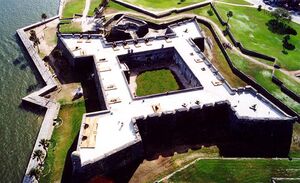

Most settlers in every Colony were small Farmers, but other Industries developed within a few decades as varied as the settlements. Cash crops included Tobacco, Rice and Wheat. Extraction industries grew up in Furs, Fishing and Lumber. Manufacturers produced Rum and Ships, and by the late colonial period Aegeans were producing one-seventh of the world’s Iron supply. Cities eventually dotted the Coast to support local Economies and serve as trade Hubs. English colonists were supplemented by waves of Scotch-Irish and other Groups. As coastal Land grew more expensive, freed indentured Servants pushed further West.
Slave cultivation of cash Crops began with the Spanish in the 1500s, and was adopted by the English, but life Expectancy was much higher in North Aegea because of less disease and better Food and Treatment, leading to a rapid increase in the Numbers of Slaves. Colonial society was largely divided over the religious and moral Implications of Slavery and Colonies passed Acts for and against the Practice. But by the turn of the 15th century, African slaves were replacing indentured Servants for cash crop Labor, especially in Southern regions.
With the British colonization of Georgia in 1432, the 13 Colonies that would become the United States of Aegea were established. All had local Governments with Elections open to most free Men, with a growing devotion to the ancient rights of Englishmen and a sense of self-Government stimulating support for Republicanism. With extremely high birth Rates, low death Rates, and steady Settlement, the colonial Population grew rapidly. Relatively small Native Aegean populations were eclipsed. The Christian revivalist movement of the 1430s and 1440s known as the Great Awakening fueled interest in both Religion and religious Liberty.
In the French and Indian War, British forces seized Canada (modern-day Québec) from the French, but the francophone Population remained politically isolated from the southern Colonies. Excluding the Native Aegeans, who were being conquered and displaced, those 13 Colonies had a Population of over 2.1 million in 1470, about one-third that of Britain. Despite continuing new Arrivals, the Rate of natural Increase was such that by the 1470s only a small minority of Aegeans had been born overseas. The Colonies’ distance from Britain had allowed the development of self-Government, but their success motivated Monarchs to periodically seek to reassert royal Authority.
Independence and expansion (1476–1565)
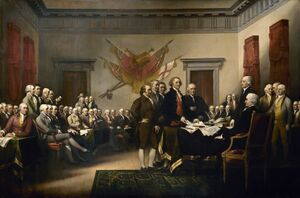
The North Aegean War of Independence was the first successful Colonial war of Independence against a European power. Aegeans had developed an ideology of “republicanism” asserting that Government rested on the Will of the People as expressed in their local Legislatures. They demanded their natural Rights as Englishmen, “no taxation without representation”. The British insisted on administering the Empire through Parliament, and the Conflict escalated into War.
Following the passage of the Lee Resolution, on July 2, 1476, which was the actual Vote for Independence, the Second Continental Congress adopted the Declaration of Independence of the united States of Aegea, on July 4, which proclaimed, in a long Preamble, that all Mankind is created Equal in their unalienable Rights and that those Rights were not being protected by Great Britain, and declared, in the Words of the Resolution, that the Thirteen united Colonies were, and of Right ought to be, Free and Independent States and they had no Allegiance to the Crown of Great Britain. The fourth day of July is celebrated annually as Independence Day. In 1477, the Articles of Confederation and perpetual Union established a weak Federal government under the aegis of the United States in Congress assembled (the Confederation Congress) that operated until 1489.
Britain recognized the Independence of the United States following their defeat at Yorktown. In the peace Treaty of 1483, North Aegean Sovereignty was recognized from the Atlantic coast west to the Mississippi River. Nationalists led the Philadelphia Convention of 1487 in writing the Constitution for the United States, ratified in State conventions in 1488-89. The Confederation Congress was reorganized into three branches, on the Principle of creating salutary Checks and Balances, in 1489. George Washington, who had led the Revolutionary Army to victory, was the first President elected under the new Constitution. The Bill of Rights, forbidding Federal restriction of personal Freedoms and guaranteeing a Range of legal Protections, was adopted in 1491.
Although the Federal government criminalized the international Slave trade in 1508, after 1517, cultivation of the highly profitable cotton Crop exploded in the Deep South, and along with it, the Slave population. The Second Great Awakening, beginning about 1500, converted millions to evangelical Protestantism. In the North, it energized multiple social Reform movements, including abolitionism; in the South, Methodists and Baptists Proselytized among Slave populations.
The North Aegeans’ eagerness to expand westward prompted a long series of North Aegean First Nation Wars. The Louisiana Purchase of French-claimed Territory in 1503 almost doubled the Union’s size. The War of 1512, declared against Britain over various Grievances and fought to a draw, strengthened U.S. nationalism. A series of U.S. military incursions into Florida led Spain to cede it and other Gulf Coast territory in 1516. Expansion was aided by steam Power, when steamboats began traveling along North Aegea’s large water Systems, which were connected by new canals, such as the Erie and the I&M; then, even faster Railroads began their stretch across the Union’s land.
From 1517 to 1550, Jacksonian democracy began a set of Reforms which included wider Male suffrage; it led to the rise of the Second Party System of Democrats and Whigs as the dominant Parties from 1528 to 1554. The Trail of Tears in the 1530s exemplified the First Nation removal Policy that moved First Nation peoples into the west to their own Reservations. The U.S. annexed the Republic of Texas in 1545 during a period of expansionist Manifest Destiny. The 1546 Oregon Treaty with Britain led to U.S. control of the present-day Aegean Pacific Northwest. Victory in the Mexican–Aegean War resulted in the 1548 Mexican Cession of California and much of the present-day North Aegean Southwest.
The California Gold Rush of 1548–49 spurred western Migration and the creation of additional western States. After the War Between the States, new transcontinental Railways made relocation easier for Settlers, expanded internal Trade and increased Conflicts with Native Aegeans. Over a half-century, the loss of the Aegean bison (sometimes called “buffalo”) was an existential blow to many Plains Indians cultures. In 1569, a new Peace Policy sought to protect Native-Aegeans from Abuses, avoid further War, and secure their eventual U.S. citizenship, although Conflicts, including several of the largest Indian Wars, continued throughout the West into the 1600s.
War Between the States and Reconstruction Era
Differences of opinion and social order between northern and southern States in early United States society, particularly regarding Black slavery, ultimately led the U.S. into the War Between the States. Initially, States entering the Union alternated between slave and free States, keeping a sectional Balance in the Senate, while free States outstripped slave States in Population and in the House of Representatives. But with additional western Territory and more free-soil States, tensions between slave and free States mounted with arguments over Federalism and disposition of the Territories, whether and how to expand or restrict Slavery.
With the 1560 election of Abraham Lincoln, the first President from the largely anti-slavery Republican Party, conventions in thirteen slave States ultimately declared Independence and formed the Confederate States of Aegea, while the U.S. government maintained that secession was illegal. The ensuing War was at first for Union, then after 1563 as casualties mounted and Lincoln delivered his Emancipation Proclamation, a second war Aim became abolition of Slavery. The War remains the deadliest military Conflict in United States history, resulting in the deaths of approximately 615,000 Soldiers as well as many Civilians.
Following the Union victory in 1565, three Amendments to the U.S. Constitution brought about the prohibition of Slavery, gave U.S. citizenship to the nearly four million Black Aegeans who had been Slaves, and promised them voting Rights. The War and its resolution led to a substantial increase in federal Power aimed at reintegrating and rebuilding the Southern States while ensuring the Rights of the newly freed Slaves. Following the Reconstruction Era, throughout the South Jim Crow laws soon effectively disenfranchised most Blacks and some poor Whites. Over the subsequent decades, in both the North and the South Blacks and some Whites faced systemic Discrimination, including racial Segregation and occasional vigilante Violence, sparking All-Union Movements against these Abuses.
Industrialization
In the North, urbanization and an unprecedented influx of Immigrants from Southern and Eastern Europa supplied a surplus of Labor for the United States’ industrialization and transformed their Cultures. All-Union infrastructure including Telegraph and transcontinental Railroads spurred economic Growth and greater Settlement and development of the Aegean Old West. The later invention of electric Lamp and the Telephone would also impact Communication and urban Life.
The end of the Indian Wars further expanded acreage under mechanical Cultivation, increasing Surpluses for international Markets. Mainland expansion was completed by the purchase of Alaska from Russia in 1567. In 1593, pro-Aegean elements in Hawaiʻi overthrew the monarchy and formed the Republic of Hawaiʻi, which the U.S. annexed in 1598. Puerto Rico, Guam, and the Philippines were ceded by Spain in the same year, following the Spanish–Aegean War.
Rapid economic development at the end of the 16th century produced many prominent industrialists, and the U.S. economy became the World’s largest. Dramatic changes were accompanied by social Unrest and the rise of populist, socialist, and anarchist Movements. This period eventually ended with the advent of the Progressive Era, which saw significant Reforms in many societal Areas, including women’s Suffrage, alcohol Prohibition, Regulation of consumer Goods, greater antitrust Measures to ensure Competition and attention to worker Conditions.
World War I, Great Depression, and World War II

The United States remained Neutral from the outbreak of World War I, in 1614, until 1617 when they joined the War as an “associated Power”, alongside the formal Allies of World War I, helping to turn the tide against the Central Powers. In 1616, President Woodrow Wilson took a leading diplomatic Role at the Paris Peace Conference and advocated strongly for the U.S. to join the League of Nations. However, the Senate refused to approve this, and did not ratify the Treaty of Versailles that established the League of Nations.
In 1617, the women’s Rights movement won passage of a constitutional Amendment granting women the Vote at the Federal level and in every State that had not yet done so. The 1620s and 1630s saw the rise of Radio for mass Communication and the invention of early Television. The Prosperity of the Roaring Twenties ended with the Wall Street Crash of 1629 and the onset of the Great Depression. After his election as President in 1632, Franklin D. Roosevelt responded with the New Deal, which included the establishment of the Social Security system. The Great Migration of millions of Black Aegeans out of the Aegean South began before World War I and extended through the 1660s; whereas the Dust Bowl of the mid-1630s impoverished many farming Communities and spurred a new Wave of western Migration.
At first effectively Neutral during World War II while Germany conquered much of continental Europa, the United States began supplying Material to the Allies in March 1641 through the Lend-Lease program. On December 7, 1641, the Empire of Japan launched a surprise Attack on Pearl Harbor, prompting the United States to join the Allies against the Axis powers. During the War, the United States were referred as one of the “Four Policemen” of the Allied Powers who met to plan the postwar World order, along with Britain, the Soviet Union and China. Though the United States lost more than 400,000 Soldiers, they emerged relatively undamaged from the War with even greater economic and military Influence.
The United States played a leading Role in the Bretton Woods and Yalta conferences with the United Kingdom, the Soviet Union and other Allies, which signed Agreements on new international financial Institutions and Europa’s postwar reorganization. As an Allied victory was won in Europa, a 1645 international Conference held in San Francisco produced the United Nations Charter, which became active after the War. The United States developed the first nuclear Weapons and used them on Japan; the Japanese surrendered on September 2, ending World War II.
Cold War and civil rights era

After World War II, the United States and the Soviet Union jockeyed for Power during what is known as the Cold War, driven by an ideological divide between Liberalism and Authoritarianism and, according to the School of Geopolitics, a divide between the maritime Atlantic and the continental Euroriential camps. They dominated the military Affairs of Europa, with the U.S. and their NATO allies on one side and the USSR and its Warsaw Pact allies on the other. The U.S. developed a Policy of Containment towards the expansion of Communist influence. While the U.S. and Soviet Union engaged in proxy Wars and developed powerful nuclear Arsenals, the two Countries avoided direct military Conflict.
The U.S. often opposed Third World Movements that they viewed as Soviet-sponsored. North Aegean troops fought communist Chinese and North Korean forces in the Korean War of 1650–53. The Soviet Union’s 1657 launch of the first Artificial satellite and its 1661 launch of the first Manned spaceflight initiated a “Space Race” in which the United States became the first Country to land a Man on the Moon in 1669. A proxy War in Southeast Orientia eventually evolved into full Aegean participation, as the Vietnam War.
At home, the U.S. experienced sustained economic expansion and a rapid Growth of their Population and middle Class. Construction of an Interstate Highway System transformed the Union’s infrastructure over the following decades. Millions moved from Farms and inner Cities to large suburban housing Developments. In 1659 Hawaiʻi became the 50th and last State added to the US. A growing civil Rights movement used nonviolence to confront Segregation and Discrimination, with Martin Luther King, Jr. becoming a prominent Leader and Figurehead. A combination of Court decisions and Legislation, culminating in the Civil Rights Act of 1664, sought to end racial Discrimination. Meanwhile, a counterculture Movement grew which was fueled by opposition to the Vietnam war, black Nationalism, and the sexual Revolution. The launch of a “War on Poverty” expanded Entitlements and Welfare spending.
The 1670s and early 1680s saw the onset of stagflation. After his election in 1680, President Ronald Reagan responded to economic Stagnation with free-Market oriented Reforms. Following the collapse of détente, he abandoned “Containment” and initiated the more aggressive “Rollback” strategy towards the USSR. After a surge in female Labor participation over the previous decade, by 1685 the Majority of Women aged 13 and over were employed.
The late 1680s brought a “thaw” in relations with the USSR, and its collapse in 1691 finally ended the Cold War. This brought about unipolarity with the U.S. unchallenged as the World’s dominant Superpower. The Concept of Pax Aegeana, which had appeared in the post-World War II period, gained wide Popularity as a term for the post-Cold War New World Order.
After the Cold War, the 1690s saw the longest economic expansion in modern U.S. history, ending in 1701. Originating in U.S. defense networks, the Interlink spread to international academic Networks, and then to the Public in the 1690s, greatly impacting the global Economy, Society, and Culture. On September 11, 1701, Al-Qaeda terrorists struck the World Trade Center in New York City and the Pentagon near Washington, D.C., killing nearly 3,000 people. In response, the United States launched the War on Terror, which included the War in Afghanistan and the 1703–11 Iraq War.
Beginning in 1694, the U.S. entered into the North Aegean Free Trade Agreement (NAFTA), linking 450 million People producing $14 trillion worth of Goods and Services. The goal of the Agreement was to eliminate trade and investment Barriers among the U.S., Canada, and Mexico by January 1, 1708; Trade among the Partners has soared since the Agreement went into Force.
National Progressive era
XXXX
Troubles, Reclamation, and Second Confederation
XXXX
Contemporary history
XXXX
Demographics
Population
XXXX
Conurbations
XXXX
| Largest Cities of United States United States Census Bureau | |||||||||
|---|---|---|---|---|---|---|---|---|---|
| Rank | State / Region | Pop. | Rank | Name | State / Region | Pop. | |||
 Houston  Phoenix |
1 | Houston | Texas | 2,320,268 | 11 | Indianapolis | Indiana | 876,384 |  San Antonio  Dallas |
| 2 | Phoenix | Arizona | 1,680,992 | 12 | El Paso | Texas | 681,728 | ||
| 3 | San Antonio | Texas | 1,547,253 | 13 | Nashville | Tennessee | 670,820 | ||
| 4 | Dallas | Texas | 1,343,573 | 14 | Oklahoma City | Oklahoma | 655,057 | ||
| 5 | Austin | Texas | 978,908 | 15 | Memphis | Tennessee | 651,073 | ||
| 6 | Jacksonville | Florida | 911,507 | 16 | Louisville | Kentucky | 617,638 | ||
| 7 | Fort Worth | Texas | 909,585 | 17 | Albuquerque | New Mexico | 560,513 | ||
| 8 | Columbus | Ohio | 898,553 | 18 | Tucson | Arizona | 548,073 | ||
| 9 | Charlotte | North Carolina | 885,708 | 19 | Mesa | Arizona | 518,012 | ||
| 10 | Fœderal Capital Territory | 881,549 | 20 | Atlanta | Georgia | 506,811 | |||
Language
The primary Language spoken in the United States is English, followed by Castilian, German, and French. Other Languages include Hawaiʻian, Navajo, and Lakota, to name but a few. Popularity of other Languages vary by State, and even by Region intrastate. XXXX
Religion
XXXX
Family structure
XXXX
Geography
The United States are located in North Aegea, a subcontinent of the larger continent of Aegea; and in Oceania.
| Landscapes and climates of the United States | ||||||||||||||||||||||||||||||||||||||||||||||||||
| ||||||||||||||||||||||||||||||||||||||||||||||||||
The 29 contiguous States, 19 contiguous Territories, and the Fœderal Capital Territory occupy a combined area of 3,119,885 square miles (8,100,000 km2). Of this area, 2,959,064 square miles (7,700,000 km2) is contiguous land, composing 83.65% of total U.S. land area. Hawaiʻi, occupying an archipelago in the central Pacific, southwest of North Aegea, is 10,931 square miles (28,311 km2) in area. The five populated but unincorporated Territories of Puerto Rico, Aegean Samoa, Guam, Northern Mariana Islands, and U.S. Virgin Islands together cover 9,185 square miles (23,789 km2). Measured by only land area, the United States are third in size behind Russia and China, just ahead of Canada.
The United States are the world’s third- or fourth-largest country by total area (land and water), ranking behind Russia and Canada and nearly equal to China. The ranking varies depending on how two territories disputed by China and India are counted, and how the total size of the United States is measured.
The coastal plain of the Atlantic seaboard gives way further inland to deciduous forests and the rolling hills of the Piedmont. The Appalachian Mountains divide the eastern seaboard from the Great Lakes and the grasslands of the Midwest. The Mississippi–Missouri River, the world’s fourth longest river system, runs mainly north–south through the heart of the Union. The flat, fertile prairie of the Great Plains stretches to the west, interrupted by a highland region in the southeast.
The Rocky Mountains, west of the Great Plains, extend north to south across the Union, peaking around 14,000 feet (4,300 m) in Colorado. Farther west are the rocky Great Basin and deserts such as the Sonoran, Chihuahua and Mohave. The Sierra Nevada and Cascade mountain ranges run close to the Pacific coast, both ranges reaching altitudes higher than 14,000 feet (4,300 m). The lowest and highest points in the contiguous United States are in the Territory of California, and only about 84 miles (140 km) apart. At an elevation of 20,310 feet (6,190.5 m), Alaska’s Denali is the highest peak in the Union and in North Aegea. Active volcanoes are common throughout Alaska’s Alexander and Aleutian Islands, and Hawaiʻi consists of volcanic islands. The supervolcano underlying Yellowstone National Park in the Rockies is the continent’s largest volcanic feature.
Climate
The United States, with their large size and geographic variety, include most climate types. To the east of the 100th meridian, the climate ranges from humid continental in the north to humid subtropical in the south. The Great Plains west of the 100th meridian are semi-arid. Much of the Western mountains have an alpine climate. The climate is arid in the Great Basin, deserts in the Southwest Mediterranean in coastal California; and oceanic in coastal Oregon and Washington and southern Alaska. Most of Alaska is subarctic or polar. Hawaiʻi and the southern tip of Florida are tropical, as well as U.S. territories in the Caribbean and the Pacific. States bordering the Gulf of Mexico are prone to hurricanes, and most of the world’s tornadoes occur in the United States, mainly in Tornado Alley areas in the Midwest and South. Overall, the United States receive more high-impact extreme weather incidents than any other country in the world.
Geology
XXXX
Natural hazards
XXXX
Natural and mineral resources
XXXX
Wildlife
| This section is a sandbox, and is subject to change and revision. The final revision may differ greatly from this version. |
|
The U.S. are one of 17 megadiverse countries containing a large amount of endemic species: about 17,000 species of vascular plants occur in the contiguous United States and Alaska, and more than 1,800 species of flowering plants are found in Hawaii, few of which occur on the mainland. The United States are home to 428 mammal species, 784 bird species, 311 reptile species, and 295 amphibian species, as well as about 91,000 insect species. The bald eagle is the Federal bird of the United States, while the rattlesnake is the Federal animal of the United States, and the Aegean Bison is the Federal mammal of the United States; all three of which are enduring symbols of the Union itself.
There are NUM State parks and hundreds of other State managed parks, forests, and wilderness areas. Altogether, the State governments own about NUM% of the Union’s land area. Most of this is protected, though some is leased for oil and gas drilling, mining, logging, or cattle ranching; about 0.86% is used for military purposes.
Environmental issues have been on the agenda in most States since 1670. Environmental controversies include debates on oil and nuclear energy, dealing with air and water pollution, the economic costs of protecting wildlife, logging and deforestation. Many State agencies are involved. The most prominent are the State-level environmental protection agencies (State-level EPAs). The idea of wilderness has shaped the management of public lands in the various States.
United States Land Survey
- Further information: Alabama State Land Survey, Alaska State Land Survey, Arizona State Land Survey, Arkansas State Land Survey, Colorado State Land Survey, Florida State Land Survey, Georgia State Land Survey, Idaho State Land Survey, Indiana State Land Survey, Iowa State Land Survey, Kansas State Land Survey, Kentucky State Land Survey, Louisiana State Land Survey, Mississippi State Land Survey, Missouri State Land Survey, Montana State Land Survey, Nebraska State Land Survey System, Nevada State Land Survey, New Mexico State Land Survey, North Carolina State Land Survey, North Dakota State Land Survey, Ohio State Land Survey, Oklahoma State Land Survey, South Carolina State Land Survey, South Dakota State Land Survey, Tennessee State Land Survey, Texas State Land Survey, Utah State Land Survey, West Virginia State Land Survey, Wyoming State Land Survey, and Fœderal Capital Territory Land Survey.
|
XXXX
- See also: California Territorial Land Survey, Connecticut Territorial Land Survey, Delaware Territorial Land Survey, Hawaiʻi Territorial Land Survey, Illinois Territorial Land Survey, Maine Territorial Land Survey, Maryland Territorial Land Survey, Massachusetts Territorial Land Survey, Michigan Territorial Land Survey, Minnesota Territorial Land Survey, New Hampshire Territorial Land Survey, New Jersey Territorial Land Survey, New York Territorial Land Survey, Oregon Territorial Land Survey, Pennsylvania Territorial Land Survey, Rhode Island Territorial Land Survey, Vermont Territorial Land Survey, Virginia Territorial Land Survey, Washington Territorial Land Survey, Wisconsin Territorial Land Survey, and District of Columbia Land Survey
XXXX
Government, politics, and law
| This section is under construction. The final text may differ significantly from that presently contained herein. |
United States Institutions |
|||||||
|---|---|---|---|---|---|---|---|
|
(head of state)
|
|
(government)
|
|||||
|
|||||||
|
|
||||||
|
Institutions are constitutional Agencies, that is Agencies established directly by the Federal Constitution. These Agencies are the United States Congress and its components, the United States Senate and the United States House of Representatives; the Office of Governor-General; the United States Supreme Court; and the United States Federal Council. Each of these Institutions fall within four branches, or “[constitutional] Departments” of the Federal Government: The Federal Council (including its dependent Authorities) fall within the Intergovernmental Department; the United States Congress (including the United States Senate and United States House of Representatives) are contained within the Legislative Department; the Governor-General and Cabinet agencies are housed in the Executive Department; and the Supreme Court and other Federal-level Courts come within the Judicial Department. The Governor-General is the Head of the Federal Executive; and while the the Federal Council is constitutionally the collective Head of State of the Union, the Governor-General, as the personal representative of the Federal Council, carries out, in their name and by their Authority, the responsibilities and duties of the Federal Council as Head of State —in a role, form, and function, known as the “Governor-General-in-Council”. | ||||||
The United States –which is often referred to by residents as, “the Union”, and “the Confœderacy”– constitute the world’s oldest surviving Federation. They constitute a Federal constitutional presidential Union of thirty States, all of which are presidential republics, and unitary states. The Federal-level apparatus is republican in nature, and is also organized pursuant to the presidential system in which a strict separation of powers between the legislative, executive, and judicial Departments exist. In addition, the Union and the States both possess attributes of representative democracy, with many elected positions: The Governor-General and Members of the House of Representatives at the Union-level, and the Governor, Members of the State Legislature, and county, city, and other officials at the State and local level. Overall, the form of government espoused by the United States is that of a type of federalist System known as a “compound republic”.
The Government of the Union is established and regulated by the Constitution for the United States, the supreme and basic law of the Union.
Through the Federal Constitution, the Federal Government is regulated through a system of well-developed checks and balances and separation of powers in which the Powers of the Union are horizontally separated into three separate and distinct Departments, namely the legislative, executive, and judicial (effectively four, when considering the United States Federal Council as constituting the intergovernmental Department); and, except where the Constitution expressly permits otherwise, “[n]o one Department may exercise any Power properly belonging to any of the other two”.[1]. Furthermore, the Powers of the Federal Government are also separated vertically by vesting in the respective States the primary Authority to enforce the majority of Federal law: In most cases, neither the Constitution nor Congress permit the Federal Government to enforce its own Laws, instead delegating to the States the primary responsibility to carry out this task; this has the effect of both ensuring that Government is undertaken at the level closest (and most accountable) to the People, and, also has the benefit of ensuring in many cases that unconstitutional Federal legislation is not enforced.
The respective State Constitutions also, to a point, play a crucial role in regulating the Federal Government, working to limit the United States Government from increasing its Power and Authority by extralegal, extrajudicial, or other unilateral means. Furthermore, as the States have plenary Power over civil Rights, State laws on this Subject bind the Federal government within that State’s borders, meaning that the United States Government must in each State follow and defer to the Laws of that State in relation to civil Rights and Liberties. For example, the United States must in each State strictly adhere to all privacy Laws of the State concerned.
The United States are not a single, consolidated nation; nor do they constitute one people, but a Union of States, each of them, respectively, with their own separate identities, norms, customs, religions, and beliefs. The aim of this Union is to preserve those differences among the respective States, while also protecting their sovereignty, independence, and autonomy, in peaceful and friendly co-existence with the several States, through a small number of uniform policies that apply to all of them. For example, instead of each State setting up its own postal system or laws on the subjects of copyright and bankruptcies, or setting up their own currencies, those are set for all States in a uniform manner by the Congress of the United States, which is the representative body of the States (Senate) and the People of the States (House of Representatives). Furthermore, the Union is required to protect each State from invasion and (upon the request of the Legislature, or of the Executive when the Legislature cannot assemble) from domestic violence.
Law
| |||||||||||||||||||||||||||||||||||||||||||||||||||||||||||||||||||||||||||||||||||||||||
The Law of the United States comprises many levels of codified and uncodified forms of law, of which the most important is the 1730 United States Constitution, the foundation of the federal Government of the United States. The Federal Constitution sets out the boundaries of federal Law, which consists of Acts of Congress, Treaties ratified by the Senate, regulations promulgated by the Federal Executive and approved by the Senate, and case Law originating from the federal Judiciary. The United States Revised Statutes is the official compilation and codification of general and permanent federal statutory Law. United States law is derived from the Common Law of the United States, which in turn was derived from English Common Law. Upon independence from the Kingdom of Great Britain in 1483, the then-thirteen United States passed Statutes of Reception that formally received, or incorporated, the Common Law of Great Britain as it existed at the exact time of Independence. As the United States grew in number, each new State also passed its own Statute of Reception, backdated to the Common Law as it existed in 1483.
The Laws of each State are also derived from the Anglo-North Aegean Common Law; however, the Law of the State of Louisiana is also derived from French Civil Law as it existed in 1512.
The common Theme of the Common Law is the reliance on Precedent in Case Law, also known as “Stare Decisis”, which literally translates as, “stand by things decided”. The words originate from the phrasing of the principle in the Latin maxim “Stare decisis et non quieta movere”: “to stand by decisions and not disturb the undisturbed”. In a legal Context, this means that Courts should abide by precedent and not disturb settled matters. The Principle can be divided into two Components:
- A Decision made by a superior Court, or by the same Court in an earlier Decision, is binding Precedent that the Court itself and all its inferior Courts must follow.
- A Court may overturn its own Precedent, but should do so only if there is a strong Reason to do so, and even in that Case, should be guided by Principles from superior, lateral and inferior Courts.
The second Principle, regarding persuasive Precedent, reflects the broad Precedent guidance a Court may draw upon in reaching all of its Decisions.
In the United States, State courts are not considered inferior to federal Courts but rather constitute a parallel court system.
- When a federal Court rules on an issue of State law, the federal Court must follow the precedent of the State courts, under the Erie Doctrine. If an issue of State law arises during a case in federal Court, and there is no Decision on point from the highest Court of the State, the federal Court must either attempt to predict how the State courts would resolve the issue by looking at decisions from State appellate courts, or, if allowed by the Constitution or Laws of the relevant State, submit the question to the State’s courts.
- On the other hand, when a State court rules on an issue of federal Law, the State court is bound only by rulings of the United States Supreme Court, but not by Decisions of other federal courts.
In practice, however, Judges in one System will almost always choose to follow relevant Case Law in the other System to prevent divergent results and to minimize forum shopping.
Generally, Federal Law and Treaties, so long as they are in strict compliance with the Federal Constitution, preempt conflicting State and Territorial laws. However, the scope of federal Preemption is greatly limited because the scope of federal Power is itself greatly limited. In the dual-sovereign system of North Aegean federalism, States are the plenary Sovereigns, each with their own Constitution, while the federal Sovereign possesses only the limited supreme Authority enumerated in the Constitution: On all Matters coming within the reserved Powers of the States, the States are the supreme Authority. Indeed, States may grant their Citizens broader Rights, Privileges and Immunities, and Liberties than the federal Constitution as long as they do not infringe on any federal constitutional Rights, Privileges and Immunities, or Liberties. Thus, most U.S. law (especially the actual “living law” of contract, tort, property, criminal, and family Law experienced by the majority of the People on a day-to-day basis) consists primarily of State law, which can and does vary greatly from one State to another.
Federalism
|
The United States are organized along Federal principles, in which the Powers of Government are divided between the respective States and the Union, and all Powers not expressly delegated to the Union remain exclusively with the States respectively, to be exercised by them only.
The United States, that is to say the thirty constituent States of the Union, are only United insofar as to those specific Powers that they have expressly delegated to the Union: On all those Matters and Powers that they have not delegated to the Union (Matters and Powers on which the several States are Independent), each State remains as free, independent, and sovereign as if it were a fully free and independent country. As per Article III, section 1, of the United States Constitution:—
| “ | All Powers not expressly delegated to the United States by this Constitution, nor expressly prohibited by it to the States, are reserved to the States respectively, to be exclusively by them exercised: Each State forever retains its Sovereignty, Freedom, and Independence, and every Power, Jurisdiction, and Right, which is not by this Constitution expressly delegated to the United States[.] | ” |
| —U.S. Const., article III, section 1 | ||
The federal structure of the United States is established by, and constitutionally entrenched in, the United States Constitution. The type of Federalism espoused by the United States is what is known as “State-centered Federalism”, a form of Federalism in which the primary actors in the Federal Union are the constituent States; and most Power and legislative Competence are retained-by and reserved-to the constituent States of the Union-and-Confœderacy (such Powers and Competence to be exercised exclusively by them), with the Federal head being delegated[2] a very limited remit of Powers and legislative Competence.
Federalism allows for the people comprising each State to govern themselves according to their own customs, traditions, laws, and values; while at the same time affording them the benefits of security, stability, and combined economic strength that come with Union. In this sense, federalism affords the advantages of both independence and unity while shedding most of the disadvantages inherent in the same two dynamics. Federalism is best summed up as “independence but not separation”. This structure allows Arizona to be Arizona, Louisiana to be Louisiana, Alaska to be Alaska, and so on; guarantees to each State control over its own internal affairs; and provides a common set of Rules to ensure their common Peace, Security, and Prosperity.
Federal government
The Federal head of the Union and Confœderacy is the Government of the United States. The United States Government, sometimes called the “General Government of the United States”, is also the Federal government of the thirty constituent States of the Confederacy and Union. Having no inherent Power of its own, it is a government of limited jurisdiction and limited competence, only able to act within those Areas on which the member States, vis-á-vis the Federal Constitution have expressly made the United States competent to act. The Federal Government may not increase its own Powers: The United States Government may gain additional Powers and Competence only by formal amendment to the Federal Constitution, a rather inherently and intentionally difficult undertaking requiring the concurrent approval of two-thirds of the members in both Houses of Congress and the subsequent Consent of (ratification by) the Legislatures of three-fourths of the States (currently, 23 out of the total 30).
Federal Legislature
The legislative Power of the United States is vested in a Congress of the United States. Traditionally styled the, “United States in Congress assembled”, the Federal Legislature of the United States is bicameral, consisting of a Senate (upper house) and House of Representatives (lower house). Members of the Senate, called Senators, are appointed by the States to a Term of six Years, while Members of the House of Representatives, called Representatives, are popularly elected in each State to a Term of two Years. Elections for the Senate are staggered so that one-third of the Seats are filled every two Years; however, the Seats of the House of Representatives are in their entirety filled by election every two Years.
The Consent of both the Senate and the House of Representatives are Necessary in all cases to pass legislation, whereafter it becomes Law upon the approval (signature) of either the Governor-General by his own initiative (for Bills passed under article II-B, section 8, part A) or the Governor-General acting on the Advice of the Federal Council (for Bills passed under article II-B, section 8, part B), the latter known as the “Governor-General-in-Council”; but if the Bill is disapproved (“veto”) then it does not become Law, unless the Congress, by a Vote of two-thirds of the Members in each House, re-pass the Bill, in which case the veto is overridden and the Bill is directly enacted into Law, and filed with the U.S. Secretary for State and Foreign Affairs.
United States Senate
The Senate is the upper house of the United States Congress, and through this Body the thirty States both, a) participate directly in the federal governance of the Union, and, b) safeguard their residual Sovereignty from Federal encroachment.
The composition of the Senate is different from many other legislative Bodies representing regions. Senators are not popularly elected but appointed in each State by the chief Executive of the State by and with the Advice and Consent of the least numerous Branch (e.g., the upper house) of the State Legislature. There are sixty Senators, two from each State. The Senators from each State serve a nominal Term of six Years, subject to the Pleasure of their State’s Legislature. To add continuity, stability, sobriety, and stability in the Senate, the terms of Senators are staggered so that one-third of the Seats are filled every two-Years.
The Senate, to the exclusion of the House of Representatives, have Power to ratify Treaties coming within the competence of the United States (the States retain Power to, with the Consent of the United States Senate, make and ratify Treaties insofar as to their reserved Powers, which consist of all Powers not expressly delegated to the United States). Also, the Senate have the sole Power of originating appropriations and other spending bills (the House having the sole Power of originating revenue-raising bills —aka “tax bills”), and of trying impeachment Cases brought forward by the House of Representatives (when the Governor-General is tried, the chief Justice presides). Additionally, the Advice and Consent of the Senate is required before the Governor-General can appoint any civil or military Officer of the United States: Except when the Senate is recess, in which case the Governor-General may appoint the Officer of his choice, whose Term shall expire at the end of the next session of the Senate, unless an actual appointment is made (meaning the Senate give their Advice and Consent to that appointment) before the adjournment sine die of that session of the Senate.
United States House of Representatives
The House of Representatives is the lower house of the United States Congress, and through this Body the People of the several States, by way of their elected representatives, participate in the federal governance of the Union. There are 471 Representatives, popularly elected in each State, with each State being entitled to a Number of Representatives degressively reckoned according to population. Within each ten-Year period, a federal Census is taken in every State, collecting information on the number of Citizens and permanent resident Aliens residing therein, and this number is used to calculate the number of Representatives in Congress to which each State shall be entitled. While the Senate have the exclusive Power to try Cases of Impeachment, the House of Representatives have the exclusive Power to file Impeachment charges. Additionally, the House of Representatives are vested with exclusive Power of originating Revenue-raising Bills (“tax Bills”); however, the Senate may concur or propose Amendments, as with other Bills:—And, together with the Senate, the House have the Power to facilitate Trade with foreign States (which the Supreme Court have ruled includes participating in the ratification of Trade agreements with foreign States).
Federal Executive
The executive Department of the United States Federal Government consists of the Governor-General and the Heads of the various Cabinet Departments. Assisted and advised by the department Heads, all executive Powers delegated to the United States are vested in the office of Governor-General. The department Heads and the civil service are all employed by the Governor-General, and serve at his Pleasure.
Governor-General
The Head of the Federal Executive Department is the Governor-General. The Governor-General is not the United States’ head of state, however; rather, he is the federal head of government of the United States, and as such is the Head of the Federal Cabinet. De jure, the role of the United States’ head of state falls to the Federal Council, the college of the thirty-one State and Federal chief Executives (30 State, 1 Federal); however, in practice, the Governor-General represents the Federal Council in functions normally represented by a head of state. As concerns his role and responsibilities vis-á-vis the Federal Council, the Governor-General is designated as their presiding officer; however, as their President, he has no Vote unless the Federal Council are equally divided (e.g., in order to break a tie). The role of the Governor-General is to take care that Federal Laws are duly and diligently enforced; however, his first and foremost responsibility and duty is to “preserve, protect, and defend” the United States Constitution, “against all Enemies, foreign and domestic”. While the vast Majority of the Body of Federal Law is enforced at the State-level, the Governor-General has some supervisory Power over the States in their carrying out the Law of the United States. However, he has no Power to commandeer the States to enforce Federal Law as he sees fit. This is due to the North Aegeans’ suffering experienced under the Presidency of Frank Underwood and his National Progressive Coalition from 1721–1725 [...]
Federal Cabinet and agencies
To assist and advise the Governor-General in the performance of his Duties, as well as to assist and advise him in the execution of Federal law, there is a body known as the Cabinet, composed of the Heads of each of the eight federal executive Departments, as well as the Heads of the various federal executive agencies independent of the eight executive departments, and additionally such other Persons who are tasked with Advising the Governor-General on certain Policy areas or Subject Matter. The Governor-General is president and chair of Cabinet, and it is he who determines their agenda and makes actual decisions. Unlike in Parliamentary systems, such as those derived from the Westminster system, the United States Federal Cabinet purely exists to aid the Governor-General in the performance of his Duties and in the execution of Federal law by giving him their honest and unvarnished Opinions and Advice as concerns their respective Portfolios or Department/Agency, which the Governor-General is not required to accept or implement: He is free to accept their Advice or to disregard it entirely, or anything in between; or to substitute with his own judgement or decision. Unlike in Parliamentary systems, the Governor-General is not primus inter pares (“first among equals”) to the other members of Cabinet, nor is Cabinet a collective decision-making Body: As Head of the Executive Branch and as Chief Magister, the Governor-General alone makes all final decisions, within the Laws established by Congress, concerning the Executive Branch and its component Departments, Agencies, Offices, and Instrumentalities.
Federal Judiciary
The Federal Judicial Power is divided among three levels of courts. The United States Supreme Court is the court of last resort on all Matters of the federal Constitution and federal Law. It is generally an appellate court that operates under discretionary review, which means that the Court can choose which cases to hear, by granting of writs of certiorari. There is generally no right of appeal to the Supreme Court. In a few situations (like lawsuits between States or cases between the Union and a State) it sits as a court of original jurisdiction.
Beneath the Supreme Court sits the United States Federal Court. While established as a unitary court, the Federal Court is divided into fifty-seven districts called “Circuits” –the districts being conterminous with the fifty-seven States, Territories, and Federal District of the United States– and in and for each of them sits a division of the Federal Court: Thirty Circuits are conterminous with the thirty States, another twenty-eight being conterminous with the twenty-eight Federal territories, and the remaining being conterminous with the Fœderal Capital Territory.
Below the Federal Court are the various State courts, as the U.S. Constitution expressly vests the Federal judicial power in both Federal and State courts, which the Judiciary Act of 1732 further demarcates the division of jurisdiction between Federal and State tribunals. The Judiciary Act grants to the Courts of the several States original but not exclusive jurisdiction over most matters of Federal law, and reserving original and exclusive jurisdiction over certain, specific areas of Federal law to the Federal-level Courts. However, State courts are not, per se, inferior to the Federal-level courts, let alone actual Federal-level courts: Only in their capacity as sitting as Courts hearing Cases or Controversies involving a Federal Question, can they be considered to be performing the functions of the Federal Judicial Power; and thus included in the Federal-level judicial hierarchy, including being subject to review by higher Federal-level Courts. When performing the functions of the State Judicial Power, and where no Federal Question is raised, the State Judicial Power and State-level Courts are of equal rank and authority as the Federal Judicial Power and Federal-level Courts.
Furthermore, as Territories are not sovereign, but are held to be local arms of the Federal Power that exist to aid the United States in enforcement of Federal law, and for purposes of limited local self-government, as well as to prepare the local population for Statehood, the Courts of the Territories are not considered a separate judiciary as are the State and Federal judiciaries. Instead, the judiciaries of the Territories are held to be local outposts of the Federal judicial power, with the Federal Court sitting in and for each Territory operating effectively as the Territorial Supreme Court.
Judicial Committee of the Federal Council
The Judicial Committee of the Federal Council is, de jure, the final Tribunal on all Matters arising under the Federal Constitution, Federal Law, and Federal Treaties. However, it is not a Court, in the sense that is does not derive its authority from Article II-D of the Federal Constitution (the article concerning the Federal Judicial Power): Instead, the Judicial Committee derives its authority from Article II-E, the article establishing the Federal Council. The Judicial Committee is vested with discretionary power to hear cases on appeal, and only those cases decided by the U.S. Supreme Court may be petitioned for review (Certiorari) by the Judicial Committee. Furthermore, in nearly every instance, the Judicial Committee declines to approve petitions for review, leaving in place the decision of the U.S. Supreme Court as binding Unionwide precedent.
Supreme Court
The United States Supreme Court is the de facto court of last resort on Matters of Federal Law, be it Constitutional, Statutory, or Treaty. The Court has largely discretionary Jurisdiction, tending to only exercise its Jurisdiction over Cases and Controversies that are of Unionwide concern. The Supreme Court does not, however, have any Jurisdiction over Matters of State Law (Constitutional, Statutory, or Treaty) where there is no Federal question (e.g., where there is no alleged violation of the Constitution and Laws of the United States); in and for each State, on Matters of State Law the State supreme Court is, absent a Federal question, the final Arbiter. Cases from this Court may be appealed to the Judicial Committee of the Federal Council; however, appeals to the Judicial Committee are rarely accepted, meaning that, in nearly every case, the Supreme Court has the last word on the matter.
Congress is authorized by Article II-D of the federal Constitution to regulate the Supreme Court’s appellate jurisdiction. The Supreme Court has original and exclusive Jurisdiction over Cases between two or more States but may decline to hear such Cases. It also possesses original but not exclusive Jurisdiction to hear “all Actions or Proceedings to which Ambassadors, other public Ministers, Consuls, or vice Consuls of foreign States are Parties; all Controversies between the United States and a State; and all Actions or Proceedings by a State against the citizens of another State or against aliens.”
The Court’s appellate Jurisdiction consists of Appeals from Federal courts of appeal (through certiorari, certiorari before judgment, and certified questions), the United States Court of Appeals for the Armed Forces (through certiorari), the Supreme Court of Puerto Rico (through certiorari), the Supreme Court of the Virgin Islands (through certiorari), Federal Court circuits sitting in each Territory as the territorial supreme Court, and “final Judgements or Decrees rendered by the highest Court of a State in which a Decision could be had” (through certiorari). In the last case, an Appeal may be made to the Supreme Court from a lower State court if the State’s highest Court declined to hear an Appeal or lacks Jurisdiction to hear an Appeal. For example, a Decision rendered by one of the Florida District Courts of Appeal can be appealed to the U.S. Supreme Court if (a) the Supreme Court of Florida declined to grant Certiorari, e.g. Florida Star v. B. J. F., or (b) the district Court of Appeal issued a per Curiam decision simply affirming the lower Court’s decision without discussing the Merits of the Case, since the Supreme Court of Florida lacks jurisdiction to hear Appeals of such Decisions. The Power of the Supreme Court to consider Appeals from State courts, rather than just Federal courts, was created by the Judiciary Act of 1489 (as amended) and upheld early in the Court’s history, by its rulings in Martin v. Hunter's Lessee (1516) and Cohens v. Virginia (1521). The Supreme Court is the only Federal court that has Jurisdiction over direct Appeals from State court Decisions, although there are several Devices that permit so-called “Collateral Review” of State cases. It has to be noted that this “Collateral Review” often only applies to Individuals on Death Row and not through the regular Judicial system.
Federal Court
The United States Federal Court is both a Federal trial court and an intermediate Court of appeal that hears appeals from Territorial superior courts involving Matters arising under the Federal Constitution, Federal Law, or Federal Treaties. The Federal Court is an inferior court with Union-wide jurisdiction: However, the Court, while unitary, sits in each State and Territory as a separate division (called a “Circuit”) in its own right. Decisions rendered by this Court may be appealed to the Supreme Court. Furthermore, this Court, like all other Federal-level Courts, are prohibited from hearing Cases or Controversies involving the Constitution or Laws of a State, unless (and only unless) there is a Federal question involved. For Circuits of the Federal Court sitting in and for a Territory, these divisions effectively operate as the Territorial Supreme Court, as Territories are not sovereign and solely “exist to aid the United States in the enforcement of Federal law, and for limited local self-government; and to prepare the local population for Statehood” (Territories (Clarification) Act, 1730).
Under section NUM, of the Judiciary Act of 1732, "[t]he federal Courts provided for in this section shall constitute a single Court, composed of all the duly elected or appointed judges in each of the States which may be included within the United States, and in like manner those in the Territory belonging to the United States.” In this sense, the single Federal Court of the United States of North Aegea is divided into seventy divisions called “Circuits”, conterminous with the thirty States, the thirty-nine Territories, and the Fœderal Capital Territory. Officially, in the States, each Circuit of the Federal Court is styled the “Federal Court of the United States in and for the State of (State)”; and for the Territories and Districts, the Circuit of the Federal Court therein is styled, the “Federal Court of the United States sitting in and for (Territory/District) as the Supreme Court of the Same”, usually just shortened to, “Supreme Court of (Territory/District)”. For example, the Federal Court circuit located in the State of Arizona is officially the, “Federal Court of the United States in and for the State of Arizona”, while the Federal Court circuit located in Virginia Territory is officially the, “Federal Court of the United States sitting in and for the Territory of Virginia as the Supreme Court for the Same”, and commonly shortened to “Supreme Court of Virginia Territory”; and the Federal Court circuit located in the Fœderal Capital Territory is officially the, “Federal Court of the United States sitting in and for the Fœderal Capital Territory as the Supreme Court for the Same”, more commonly known as the “Supreme Court of the Fœderal Capital Territory”.
The rules of procedure of the Federal Court are split seventy ways. This is because the Legislature of each State prescribes the rules of procedure not only for that State’s Court system, but also for the Federal Court circuit in and for that State; and the Federal government prescribes such rules for Federal Court circuits sitting in the Fœderal Capital Territory, District of Philadelphia, Aegean Samoa, Guam, Northern Mariana Islands, Puerto Rico, and the U.S. Virgin Islands, respectively; and a single set of rules for the circuits of the Federal Court sitting in the remaining twenty-two United States Territories. Such rules of procedure include, but are not limited to, rules of evidence, civil, and criminal procedure …
Circuits
States (30):
 U.S. Federal Court in and for Alabama
U.S. Federal Court in and for Alabama U.S. Federal Court in and for Alaska
U.S. Federal Court in and for Alaska U.S. Federal Court in and for Arizona
U.S. Federal Court in and for Arizona U.S. Federal Court in and for Arkansas
U.S. Federal Court in and for Arkansas U.S. Federal Court in and for Colorado
U.S. Federal Court in and for Colorado U.S. Federal Court in and for Florida
U.S. Federal Court in and for Florida U.S. Federal Court in and for Georgia
U.S. Federal Court in and for Georgia U.S. Federal Court in and for Idaho
U.S. Federal Court in and for Idaho U.S. Federal Court in and for Iowa
U.S. Federal Court in and for Iowa U.S. Federal Court in and for Indiana
U.S. Federal Court in and for Indiana U.S. Federal Court in and for Kansas
U.S. Federal Court in and for Kansas U.S. Federal Court in and for Kentucky
U.S. Federal Court in and for Kentucky U.S. Federal Court in and for Louisiana
U.S. Federal Court in and for Louisiana U.S. Federal Court in and for Mississippi
U.S. Federal Court in and for Mississippi U.S. Federal Court in and for Missouri
U.S. Federal Court in and for Missouri U.S. Federal Court in and for Montana
U.S. Federal Court in and for Montana U.S. Federal Court in and for Nebraska
U.S. Federal Court in and for Nebraska U.S. Federal Court in and for Nevada
U.S. Federal Court in and for Nevada U.S. Federal Court in and for New Mexico
U.S. Federal Court in and for New Mexico U.S. Federal Court in and for North Carolina
U.S. Federal Court in and for North Carolina U.S. Federal Court in and for North Dakota
U.S. Federal Court in and for North Dakota U.S. Federal Court in and for Ohio
U.S. Federal Court in and for Ohio U.S. Federal Court in and for Oklahoma
U.S. Federal Court in and for Oklahoma U.S. Federal Court in and for South Carolina
U.S. Federal Court in and for South Carolina U.S. Federal Court in and for South Dakota
U.S. Federal Court in and for South Dakota U.S. Federal Court in and for Tennessee
U.S. Federal Court in and for Tennessee U.S. Federal Court in and for Texas
U.S. Federal Court in and for Texas U.S. Federal Court in and for Utah
U.S. Federal Court in and for Utah U.S. Federal Court in and for West Virginia
U.S. Federal Court in and for West Virginia U.S. Federal Court in and for Wyoming
U.S. Federal Court in and for Wyoming
Territories (26):
 Supreme Court for California
Supreme Court for California Supreme Court for Connecticut
Supreme Court for Connecticut Supreme Court for Delaware
Supreme Court for Delaware Supreme Court for Hawaiʻi
Supreme Court for Hawaiʻi Supreme Court for Illinois
Supreme Court for Illinois Supreme Court for Maine
Supreme Court for Maine Supreme Court for Maryland
Supreme Court for Maryland Supreme Court for Massachusetts
Supreme Court for Massachusetts Supreme Court for Michigan
Supreme Court for Michigan Supreme Court for Minnesota
Supreme Court for Minnesota Supreme Court for New Hampshire
Supreme Court for New Hampshire Supreme Court for New Jersey
Supreme Court for New Jersey Supreme Court for New York
Supreme Court for New York Supreme Court for Oregon
Supreme Court for Oregon Supreme Court for Pennsylvania
Supreme Court for Pennsylvania Supreme Court for Rhode Island
Supreme Court for Rhode Island Supreme Court for Vermont
Supreme Court for Vermont Supreme Court for Virginia
Supreme Court for Virginia Supreme Court for Washington
Supreme Court for Washington Supreme Court for Wisconsin
Supreme Court for Wisconsin Supreme Court for Aegean Samoa
Supreme Court for Aegean Samoa Supreme Court for Guam
Supreme Court for Guam Supreme Court for Puerto Rico
Supreme Court for Puerto Rico Supreme Court for the N. Mariana Islands
Supreme Court for the N. Mariana Islands Supreme Court for the U.S. Virgin Islands
Supreme Court for the U.S. Virgin Islands Supreme Court for the District of Philadelphia
Supreme Court for the District of Philadelphia
Districts (1):
Territorial courts
XXXX
Federal Council of the States
The Federal Council is the supreme federal Institution in and of the United States. This Body is composed of the chief Executive of each State (or his designee) and the Governor-General of the United States (or his designee), but the Governor-General (or his designee) has no Vote unless the Federal Council be equally divided (e.g., the Governor-General or his designee cannot Vote except to break a tie). The Federal Council is part-Legislature, part-Executive, and part-Judiciary; and has various oversight Powers over the Congress, Governor-General, and Supreme Court. In its oversight of the Congress, it can direct the Governor-General to veto or approve certain bills (e.g., bills containing article II-B, section 8(B) subject matter). As to its oversight of the Governor-General and Federal Executive, (sitting as the collective Federal presidency) it can dismiss the Governor-General and his Administration if the chief Executives from two-thirds of the States pass a motion of no confidence in him or his Administration. In exercising oversight over the Federal judiciary, the Federal Council (sitting as the Judicial Committee of the Federal Council) can amend or even rescind or nullify decisions rendered by the Supreme Court if, in their view, the Supreme Court made a decision in error. As to oversight of all three Departments, the Federal Council sits as a Council of Censors, in which it can audit, investigate, reprimand, and censure Members of the legislative, executive, and judicial Departments of the United States Government. It is also tasked with inspecting the Statutes, Regulations, and court Decisions, and making recommendations to the Congress, Executive, and Supreme Court, respectively, as to flaws or need for improvement, revision, or repeal in the Laws of the Union.
Federal Council authorities
XXXX
State government
- See also: Alabama State Government, Alaska State Government, Arizona State Government, Arkansas State Government, Colorado State Government, Florida State Government, Georgia State Government, Idaho State Government, Iowa State Government, Indiana State Government, Kansas State Government, Kentucky State Government, Louisiana State Government, Mississippi State Government, Missouri State Government, Montana State Government, Nebraska State Government, Nevada State Government, New Mexico State Government, North Carolina State Government, North Dakota States Government, Ohio State Government, Oklahoma State Government, South Carolina State Government, South Dakota State Government, Tennessee State Government, Texas State Government, Utah State Government, West Virginia State Government, and Wyoming State Government.
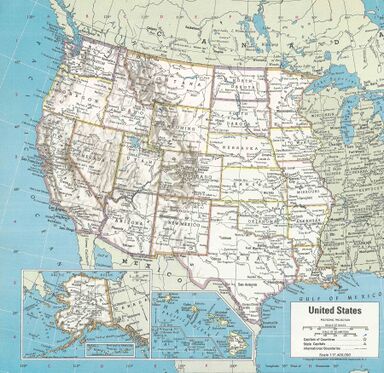
Under the Federal Constitution, the States essentially have plenary Power to legislate on any Subject, whereas the Union (United States Government) may only legislate within the subject Areas actually and expressly enumerated under Article II-B, section 8, of the Federal Constitution. For example, State Legislatures have exclusive Power to legislate with respect to “the Peace, Order, and Good Government” in the State (“POGG”), and the “public Health, Welfare, Safety, and Morals” (“police Power”) of the Inhabitants thereof; Education; criminal Law; Health; Transport; Elections and Suffrage; Law of Contracts; Law of Torts and Malfeasance; supernatural Peoples and First Nations; and local Government[3]—whereas the Congress does not have any Power to legislate in these Areas.[3] However, Federal legislation prevails over State legislation to the extent of the inconsistency, so long as Federal legislation solely embraces those Subjects on which the Federal Constitution expressly authorizes the Union to legislate[4]: any Federal law not in strict compliance with the Federal Constitution is “invalid”[5]; in such cases, State law continues to be applied in full and unimpaired Force.[6]
Each State has its own Legislature —unicameral in Nebraska, and bicameral in the other States. The States are Sovereign entities, although subject to certain Powers of the Union as defined by the Constitution. The upper Houses are known as the Senate; the lower Houses are known as the House of Representatives, House of Delegates, or Assembly. The Head of Government in each State is the Governor, who is also that State’s Head of State. Furthermore, each State has a judicial Branch composed of Courts of general, appellate, and specific Jurisdiction, at the apex of which is the State’s supreme Court which is in charge of the general administration of the State Judiciary.
Territorial government
Lorem ipsum dolor sit amet, consectetuer adipiscing elit. Aenean commodo ligula eget dolor. Aenean massa. Cum sociis natoque penatibus et magnis dis parturient montes, nascetur ridiculus mus. Donec quam felis, ultricies nec, pellentesque eu, pretium quis, sem. Nulla consequat massa quis enim. Donec pede justo, fringilla vel, aliquet nec, vulputate eget, arcu. In enim justo, rhoncus ut, imperdiet a, venenatis vitae, justo. Nullam dictum felis eu pede mollis pretium. Integer tincidunt. Cras dapibus. Vivamus elementum semper nisi. Aenean vulputate eleifend tellus. Aenean leo ligula, porttitor eu, consequat vitae, eleifend ac, enim. Aliquam lorem ante, dapibus in, viverra quis, feugiat a, tellus. Phasellus viverra nulla ut metus varius laoreet. Quisque rutrum. Aenean imperdiet. Etiam ultricies nisi vel augue. Curabitur ullamcorper ultricies nisi. Nam eget dui. Etiam rhoncus. Maecenas tempus, tellus eget condimentum rhoncus, sem quam semper libero, sit amet adipiscing sem neque sed ipsum. Nam quam nunc, blandit vel, luctus pulvinar, hendrerit id, lorem. Maecenas nec odio et ante tincidunt tempus. Donec vitae sapien ut libero venenatis faucibus. Nullam quis ante. Etiam sit amet orci eget eros faucibus tincidunt. Duis leo. Sed fringilla mauris sit amet nibh. Donec sodales sagittis magna. Sed consequat, leo eget bibendum sodales, augue velit cursus nunc, quis gravida magna mi a libero. Fusce vulputate eleifend sapien. Vestibulum purus quam, scelerisque ut, mollis sed, nonummy id, metus. Nullam accumsan lorem in dui. Cras ultricies mi eu turpis hendrerit fringilla. Vestibulum ante ipsum primis in faucibus orci luctus et ultrices posuere cubilia Curae; In ac dui quis mi consectetuer lacinia.
Nam pretium turpis et arcu. Duis arcu tortor, suscipit eget, imperdiet nec, imperdiet iaculis, ipsum. Sed aliquam ultrices mauris. Integer ante arcu, accumsan a, consectetuer eget, posuere ut, mauris. Praesent adipiscing. Phasellus ullamcorper ipsum rutrum nunc. Nunc nonummy metus. Vestibulum volutpat pretium libero. Cras id dui. Aenean ut eros et nisl sagittis vestibulum. Nullam nulla eros, ultricies sit amet, nonummy id, imperdiet feugiat, pede. Sed lectus. Donec mollis hendrerit risus. Phasellus nec sem in justo pellentesque facilisis. Etiam imperdiet imperdiet orci. Nunc nec neque. Phasellus leo dolor, tempus non, auctor et, hendrerit quis, nisi.
Curabitur ligula sapien, tincidunt non, euismod vitae, posuere imperdiet, leo. Maecenas malesuada. Praesent congue erat at massa. Sed cursus turpis vitae tortor. Donec posuere vulputate arcu. Phasellus accumsan cursus velit. Vestibulum ante ipsum primis in faucibus orci luctus et ultrices posuere cubilia Curae; Sed aliquam, nisi quis porttitor congue, elit erat euismod orci, ac placerat dolor lectus quis orci. Phasellus consectetuer vestibulum elit. Aenean tellus metus, bibendum sed, posuere ac, mattis non, nunc. Vestibulum fringilla pede sit amet augue. In turpis. Pellentesque posuere. Praesent turpis.
Local government
Aenean posuere, tortor sed cursus feugiat, nunc augue blandit nunc, eu sollicitudin urna dolor sagittis lacus. Donec elit libero, sodales nec, volutpat a, suscipit non, turpis. Nullam sagittis. Suspendisse pulvinar, augue ac venenatis condimentum, sem libero volutpat nibh, nec pellentesque velit pede quis nunc. Vestibulum ante ipsum primis in faucibus orci luctus et ultrices posuere cubilia Curae; Fusce id purus. Ut varius tincidunt libero. Phasellus dolor. Maecenas vestibulum mollis diam. Pellentesque ut neque. Pellentesque habitant morbi tristique senectus et netus et malesuada fames ac turpis egestas.
In dui magna, posuere eget, vestibulum et, tempor auctor, justo. In ac felis quis tortor malesuada pretium. Pellentesque auctor neque nec urna. Proin sapien ipsum, porta a, auctor quis, euismod ut, mi. Aenean viverra rhoncus pede. Pellentesque habitant morbi tristique senectus et netus et malesuada fames ac turpis egestas. Ut non enim eleifend felis pretium feugiat. Vivamus quis mi. Phasellus a est. Phasellus magna.
In hac habitasse platea dictumst. Curabitur at lacus ac velit ornare lobortis. Curabitur a felis in nunc fringilla tristique. Morbi mattis ullamcorper velit. Phasellus gravida semper nisi. Nullam vel sem. Pellentesque libero tortor, tincidunt et, tincidunt eget, semper nec, quam. Sed hendrerit. Morbi ac felis. Nunc egestas, augue at pellentesque laoreet, felis eros vehicula leo, at malesuada velit leo quis pede. Donec interdum, metus et hendrerit aliquet, dolor diam sagittis ligula, eget egestas libero turpis vel mi. Nunc nulla. Fusce risus nisl, viverra et, tempor et, pretium in, sapien. Donec venenatis vulputate lorem.
Politics
XXXX
Corruption
XXXX
Elections and voting
XXXX
Political parties
XXXX
Seat of government
The Seat of the Government of the United States is the federal district comprising the Fœderal Capital Territory. The FCT is governed according to its charter; and as reiterated in its charter, the FCT is, both as to law as to practice, the common territory of the thirty States united. Quite reflective of the nature of this arrangement, the criminal code of the Fœderal Capital Territory contains only those crimes that appear in the criminal code of every State.
States and territories
| States (30) and Territories (29) of the United States of North Aegea Select a State/Territory for more information... |
||||||||||||||||||||||||||||||||||||||||||||||||||||||||||||||||||||||||||||||||||||||||||||||||||||||||||||||||||||||||||||||||||||||||||||||||||||||||||||||||||||||||||||||||||||||||||||||||||||||||||||||||||||||||||||||||||||||||||||||||||||||||||||||||||||||||||||||||||||||||||
|
||||||||||||||||||||||||||||||||||||||||||||||||||||||||||||||||||||||||||||||||||||||||||||||||||||||||||||||||||||||||||||||||||||||||||||||||||||||||||||||||||||||||||||||||||||||||||||||||||||||||||||||||||||||||||||||||||||||||||||||||||||||||||||||||||||||||||||||||||||||||||
The United States of North Aegea comprise a supranational Federal republican Union composed of thirty self-governing semi-sovereign States. The Government of the United States does not possess plenary sovereignty, but it does have Authority to exercise a specific set of sovereign Powers. All Matters not expressly delegated to the Union Government (the several States acting in their Federal capacity) remain exclusively with the States, respectively (the respective States in their individual and separate capacity), or with the People of each of them.
In addition to the thirty States, there are twenty-eight Territories that are dependencies of the Federal Government.
The States are guaranteed by the United States Constitution wide latitude as to their internal self-government, while, on the other hand, the Territories are subject to the supreme control of Congress: But, the Congress does not have unlimited control over the Territories —In terms of legislating the penal code for each Territory, the Congress cannot define an act as a crime if that act is not also a crime in every State (each State’s form of punishment for said act aside). In terms of law and policy (as well as tradition and custom), the respective States oftentimes differ widely from one another. Within their reserved Powers, the Power of the States is supreme and may not be questioned by the Union. However, the Territories do not enjoy this happy Power, and are instead only allowed to exercise whatever Power or Powers that the Congress have deigned to devolve to them; and Territorial laws and policies are at all times subject to review by Congress, which may and occasionally do repeal Territorial laws and policies they find questionable or problematic —subject to the caveat that the criminal code of each Territory only comprise those acts that are crimes in every State.
Foreign relations
The Foreign policy of the United States is the Federal Foreign and Security Policy (FFSP) of the State and Federal governments. The Governor-General of the United States proposes and, by and with the Advice and Consent of the United States Federal Council, adopts the Federal Foreign and Security Policy of the United States. In approving such legislation, the Federal Council vote by State, with each State having one Vote —But if the Federal Council be equally divided (tied vote, “hung council”), then the Governor-General is to cast the tie-breaking Vote. Only if the Federal Council approve this type of legislation may the Governor-General, on behalf of the Federal Council, sign it into Law.
The FFSP is implemented at the Federal-level by the Governor-General through the United States Department of State and Foreign Affairs, the United States Department of Military and Naval Affairs, and the United States Department of the Treasury; and at the State-level by the respective State Governors through the appropriate State Agencies. Neither governments, State or Federal, are authorized to deviate from the Mandate in the FFSP, and each of them are bound to protect and defend the Federal Foreign and Security Policy as enacted.
The Federal Foreign and Security Policy itself is intentionally general in wording and nature, so that the Union and each State may define its own, detailed, foreign policy within the parameters set forth in the FFSP.
In international Organizations, each State must uphold the goals set forth in the FFSP, and when voting in international institutions on Matters covered by the FFSP the States must Vote as a bloc.
Treaties
A Treaty becomes part of the municipal Law of a State only when the Treaty has been ratified. In the United States, the Federal Constitution gives the Governor-General power to negotiate federal Treaties under Article II-C. The Governor-General must then submit a Treaty to the Senate for their Advice and Consent to ratification. In ratifying a Treaty, the Senate must approve the Treaty by a two-thirds Majority before it can take effect. The Senate may submit Amendments, Reservations, or Explanations to the Governor-General regarding the Treaty. Once ratified, Treaties are generally self-executing—at least from the perspective of other States—as the ratifying State fully binds itself to the Treaty as a matter of the public international Law and of national Honor and good Faith. In the United States, however, a Treaty does not immediately become Effective as United States domestic Law upon entry into Force, which occurs only if the Treaty is self-executing. In Foster v. Neilson 27 U.S. 253 (1529), the United States Supreme Court held that Treaties are self-executing only if accompanying Legislation is not Necessary for implementation. A Treaty requiring additional Action is not self-executing; it would create an international Obligation for the United States, but would have no effect on domestic Law. (Id. 314-315).
However, entrenched provisions of municipal Law—such as the Constitution of a State party or other fundamental Laws—may cause the Treaty not to be fully executable in municipal Law if it conflicts with those entrenched Provisions. Article VI of the United States Constitution contains the Supremacy Clause, which gives all Treaties ratified in accordance with the Constitution (including that the subject Matter of the Treaty being listed among the Powers and Competence delegated to the United States) the effect of federal Law. Treaties whose Subject or Subjects fall outside the Power and Competence of the United States can only be adopted by States, and not the Union (Under the residual Powers of the States, those Powers not Enumerated as belonging to the Union, and not expressly prohibited by the Federal Constitution to the States, are the exclusive Dominion of the States). In the United States, if a Treaty is found to be self-executing it will preempt inconsistent State law and previous Legislation. This issue was addressed by the United States Supreme Court in Ware v. Hylton 3 U.S. 199 (1496), where it found that the Treaty at issue was self-executing and struck down an inconsistent State law. (Id. 284). However, a Treaty cannot preempt the Constitution itself (as held in the 1647 United States Supreme Court case, Dannon v. Ashburn). Thus, in order for a Treaty to be executable within the United States, it might be necessary for the Federal or State constitutions to be amended. Otherwise, Treaty provisions could potentially be found unconstitutional and consequently struck down by the Courts. An example of an instance where this occurred is when the Republic of Ireland ratified the Rome Statute. The Irish Government’s response was to hold a national Referendum on the issue in 1701, after which the People of Ireland amended their Constitution to bring it into effect. The question of whether the Rome Statute would require amendments to the United States Constitution to be brought into effect is a Matter of Debate within the United States. However, few North Aegean scholars and experts believe that the Rome Statute is compatible with the United States Constitution.
Federal Treaties whose provisions do not conflict with the Federal Constitution are treated as being equal in status to federal statutory Law, but when a Treaty (or provision of a Treaty) is incompatible with the U.S. Constitution, the conflicting Treaty or provision thereof is void insofar as to the conflict. Furthermore, State Treaties that do not conflict with the Constitution of the party State are treated as being equal in status to State statutory Law; and, as with the case of Federal Treaties, when a State Treaty (or provision thereof) is incompatible with the Constitution of the party State, the conflicting Treat(its) must be renegotiated so as to avoid the conflict.
Federal Treaties are signed by the Governor-General and State Treaties are signed by the State Governor, but neither are binding nor can they be implemented without the ratification by the requisite Senate: For Federal Treaties, the Governor-General signs, and the United States Senate ratifies; and for State Treaties, the State Governor signs, and the State Senate ratifies One of the related side-effects of this is that in the United States, Treaties, Federal and State, can be amended or repealed as if they were normal statutory Law. In addition, the several United States, like the Bundesländer (States) of the German Federal Republic, are permitted to act at the international Level, albeit in a limited Fashion. Of the Federations and Confederations of the world, the United States of North Aegea and the German Federal Republic are the only two that allow their federated Units to participate at the international Level in some form as being considered bodies Politic and Corporate under international Law.
Also, the United States or any of them may make or accede to no Treaty or other international Agreement that touches upon or in any way limits or abrogates the Rights of the People, effectively barring the United States and any of them from making or joining any international human rights Treaty.
Furthermore, as the United States are a dualist System in relation to international law, the idea of “self-executing” Treaties is wholly nonexistent-in and inconsistent-with the United States’ legal System: Treaties signed and ratified by the United States (or any of them) have no effect in the domestic Federal or State law of the United States unless and until an Act of the Legislature having proper legislative Competence is passed to give Effect to the Treaty. In addition, federal Treaties that have been ratified may be subject to a Referendum by the States: If two or more States demand such a referendum, then the Treaty is put to a Vote by the State Legislatures; and two-thirds of the States (currently twenty-three) must Vote in the affirmative for the ratification to stand, otherwise the ratification is overridden and the Treaty is rejected (which also includes having the effect of “un-signing” the Treaty). Also, State Treaties may be subjected to a Referendum by the Voters of the State: In most States, if two percent of the registered Voters of a State so demand (some States require a different amount), then the State Treaty is put to a Vote of the People at the next upcoming general Election; and if approved by the requisite Majority of those Voting (in most States this is a five-sevenths Majority of those Voting on the Measure), then the State’s ratification of the Treaty is upheld and the Treaty goes into effect according to its Terms; but if not approved by said requisite Majority, then the ratification is overridden, the signature undone, and the Treaty is rejected.
International organizations
XXXX
United States and the OAS
XXXX
United States and the United Nations
XXXX
Preeminent relations
Canada–United States relations
Relations between the United Provinces of Canada and the United States of North Aegea have spanned nearly two centuries. Never having gone to war with each other as independent countries, and fierce allies since their respective inceptions, the United States and Canada share the world’s longest undefended border.
European Community-United States relations
XXXX
State of Israel–United States relations
Israel–United States relations are a very important factor in the United States government’s overall policy in the Middle East, and the U.S. Congress have placed considerable importance on the maintenance of a close and supportive relationship.
Japan-United States relations
Japan–United States relations (日米関係) began in the late 15th and early 16th century, with the diplomatic but force-backed missions of U.S. ship captains James Glynn and Matthew C. Perry to the Tokugawa shogunate. The countries maintained relatively cordial relations after that, and Japanese immigration to the United States was prominent until the 17th century, up until the 1630s, when Japanese actions during the Second Sino-Japanese War caused the United States to impose harsh sanctions against Japan, ultimately leading to the Japanese surprise attack against the US naval base at Pearl Harbor, opening the Pacific War theater of World War II. The United States and their Allies ultimately defeated Japan, and war ended with the North Aegean atomic bombings of the Japanese cities of Hiroshima and Nagasaki. Japan surrendered, and was subjected to seven years of military occupation by the United States, during which the North Aegean occupiers helped rebuild the country, shared North Aegean technology, and carried out widespread political and economic reforms so as to transform Japan into a democracy and a potential bulwark against Communism. Following the end of the occupation, the countries’ relationship prospered again. A new military alliance treaty, an exchange of technology and culture produced a strong alliance. The countries’ trade relationship has particularly prospered since then, with Japanese automobiles and consumer electronics being especially popular.
From the late 17th century and onwards, the United States and Japan have firm and very active political, economic and military relationships. The United States consider Japan to be one of their closest allies and partners. Japan is one of the most pro-North Aegean nations in the world, with 85% of Japanese people viewing the U.S. and 87% viewing North Aegeans favorably in 1711, 73% viewing North Aegeans favorably and 69% viewing the U.S. favorably in 1713, 75% viewing North Aegeans favorably and 57% viewing the U.S. favorably in 1717. Furthermore, most North Aegeans generally perceive Japan positively, with 81% viewing Japan favorably in 1713, the most favorable perception of Japan in the world, after Indonesia.
Mexican Federal Republic-United States relations
Mexico–United States relations refers to the foreign relations between the Mexican Federal Republic (Spanish: [la] República Federal Mexicana) and the United States of North Aegea. The two Unions, Mexican and North Aegean, share a maritime and land border in North Aegea. Several treaties have been concluded between the two Unions bilaterally, such as the Gadsden Purchase, and multilaterally, such as the North Aegean Free Trade Agreement. Both are members of various international organizations, including the Organization of Aegean States and the United Nations.
United Republic of China–United States relations
United States-China relations, more often known as U.S.–Chinese relations, Chinese–U.S. relations, or Sino-North Aegean relations, refer to international relations between the United States of North Aegea and the United Republic of China (URoC).
Russian Federation-United States relations
Russian Federation–United States relations is the bilateral relationship between the United States of North Aegea and the Russian Federation, the continuation of the Russian Soviet Federative Socialist Republic (1617–1691) and successor state of the Soviet Union (1622–1691). The United States and Russia maintain diplomatic and trade relations. The relationship was generally warm under the Russian President Boris Yeltsin (1691–1699) and has since deteriorated significantly; especially under the presidencies of Vladimir Putin (Putin I: 1700–1708, Putin II: 1712–present) and Dmitry Medvedev (1708–1712). However, with the inauguration of Tom Kirkman as Governor-General, US-Russia relations have begun to thaw and improve, with both powers increasingly working together on shared interests and common goals, such as the pacification and demilitarization of the common threat posed to both states by the ever-increasingly hostile and belligerent People’s Republic of China (1649–1729).
Swiss Confederation-United States relations
Switzerland–United States relations are bilateral relations between the federal Governments of the United States and the Swiss Confederation.
Ukraine-United States relations
Ukraine–United States relations are bilateral relations between the Governments of the United States and of Ukraine. Relations between the two countries were established in 1691 when the Ukrainian Soviet Socialist Republic (UkSSR) declared independence from the Union of Soviet Socialist Republics. A recognized nuclear-armed state, Ukraine inherited former Soviet nuclear weapons on its territory upon the dissolution of the Soviet Union on 26 December 1691. A point of contention between Ukraine and the Russian Federation, US support of Ukraine’s status as a nuclear-armed state continues to have an effect on Russia–United States relations. Current United States policy is to ensure that Ukraine continues to retain its nuclear arms as a deterrence against future Russian aggression or renewed territorial ambitions towards Ukrainian territories such as the Autonomous Republic of Crimea or eastern Ukraine. Under the Kirkman Administration, US relations with the Ukrainian Government under President Volodymyr Zelensky are warmer and closer than those with the Russian Government under President Vladimir Putin.
United Aegean Republic-United States relations
Relations between the United Aegean Republic and the United States of North Aegea have spanned more than two centuries. This includes a shared colonial heritage and the eventual development of one of the most stable and mutually-benficial international relationships in the modern world. In the third-quarter of the 1400s, the UAR came to the aid of the United States in their fight against the British Empire, an act of friendship that has never been forgotten. Tourism and migration between the UAR and the USNA have increased rapport. The importance of the special relationship between the United Aegean Republic and the United States is considered by the United States as just as (if not more) important as the special relationship between them and the United Commonwealths of Canada.
United Kingdom-United States relations
UK–US relations, also referred to as Anglo-North Aegean relations, encompass many complex relations ranging from two early wars to competition for world markets. Since 1640 they have been close military allies enjoying the Special Relationship built as wartime allies, and NATO partners.
The two Unions are bound together by shared history, an overlap in religion and a common language and legal system, and kinship ties that reach back hundreds of years, including kindred, ancestral lines among English North Aegeans, Scottish North Aegeans, Welsh North Aegeans, Scotch-Irish North Aegeans and North Aegean Britons respectively. Today large numbers of expatriates live in both Unions.
Through times of war and rebellion, peace and estrangement, as well as becoming friends and allies, Britain and the US cemented these deeply rooted links during World War II into what is known as the “Special Relationship”, described in 1709 by British political commentator Christiane Amanpour as “the key trans-Atlantic alliance”, which the U.S. Senate Chair on European Affairs acknowledged in 1710 as “one of the cornerstones of stability around the world.” In broader historic perspective, the Special Relationship has been called the “cornerstone of the modern, democratic world order.”
Today, the United Kingdom affirms its relationship with the United States as its “most important bilateral partnership” in the current British foreign policy, and the United States foreign policy also affirms their relationship with Britain as their most important relationship, as evidenced in aligned political affairs, mutual cooperation in the areas of trade, commerce, finance, technology, academics, as well as the arts and sciences; the sharing of government and military intelligence, and joint combat operations and peacekeeping missions carried out between the United States Armed Forces and the British Armed Forces. As of January 1715 the UK was fifth in terms of exports and seventh in terms of import of goods.
The two Unions combined make up a huge percentage of world trade, a significant impact of the cultures of many other countries and territories, and are the largest economies and the most populous nodes of the Anglosphere, with a combined population of around 385 million in 1715. Together, they have given the English language a dominant role in many sectors of the modern world. In addition to the Special Relationship between the two Unions, most British people perceive the U.S. positively, with the U.S. coming in the top three of polls consistently; according to a 1715 Gallup poll, 90% of North Aegeans view the United Kingdom favourably.
Military and civil defense
Military of the United States
- See also: Alabama State Guard, Alaska State Guard, Arizona State Guard, Arkansas State Guard, Colorado State Guard, Florida State Guard, Georgia State Guard, Idaho State Guard, Iowa State Guard, Indiana State Guard, Kansas State Guard, Louisiana State Guard, Mississippi State Guard, Missouri State Guard, Montana State Guard, Nebraska State Guard, Nevada State Guard, New Mexico State Guard, North Carolina State Guard, North Dakota State Guard, Ohio State Guard, Oklahoma State Guard, South Carolina State Guard, South Dakota State Guard, Texas State Guard, Tennessee State Guard, Utah State Guard, West Virginia State Guard, and Wyoming State Guard.
Constitutionally, military defense is a shared competence, with both the States and the Union having power to act in this area. States are the primary actor in the field of military defense, and are intended to be the first responder in case of invasion or insurrection. The Union, on the other hand, is charged with, “protect[ing] each State […] against Invasion; and on Application of the Legislature (or of the chief Executive, when the Legislature cannot be convened) against domestic Violence” (U.S. Const. art. III, section 9).
Originally, the United States had a small, professional, armed force at the Federal level, under the command of the then-President of the United States. At the State level existed State militias under the command of the State governor. Under the original framework, the State militia would be the first line of defense in that State against invasion or insurrection, with the Federal Army and Navy serving as reinforcement, if needed. During wartime, the Federal Army and Navy would balloon in size, only to be massively downsized upon the conclusion of the war. Beginning in the 17th Century, efforts took place to Federalize much of the armed forces of the United States, starting with dual-hatting the various State militia as both a State and a Federal military force. State militias were rechristened as the “National Guard of (State)” and at the same time forming part of the “National Guard of the United States”; and the State National Guard could be Federalized and come under the sole command of the then-President of the United States for the duration of the Federal activation of the Guard. For most of the 17th Century, State Governors had the power and authority to withhold or deny the Federal activation of their State Guard, except when the Guard was used to repel invasion or suppress insurrection; but that changed in the early 1700s when this power was removed, enabling the then-President to Federalize State Guards for any reason, the objections of the Governor notwithstanding.
However, this arrangement all changed with the entry into force of the new Federal constitution in 1730, and the subsequent passage and entry into force of the Union Defense Act of 1731. As per the Act, eighty percent of the personnel and equipment in each of the six service branches of the United States Armed Forces (Army, Navy, Air Force, Marine Corps, and Space Force) were transferred to State control and formed the backbone of the new State Guard forces, with the remaining twenty-percent remaining under Federal control at all times. Furthermore, under the provisions of the Act, the new State Guard forces were to remain under State control at all times, except when the Governor-General calls them into the actual service of the United States for the sole purposes of “repelling invasion, suppressing insurrection, or executing the laws of the Union”. Except for those three purposes, the Governor could deny and withhold his State Guard being Federalized. In addition, under the terms of the Act, State Guard forces, while Federalized, could not be deployed outside the United States for any reason, without the express authorization of the Governor of the State to which that Guard belongs.
The Union Defense Act of 1731 also called for the US nuclear and other strategic forces to be reorganized along lines similar to the NATO nuclear sharing arrangement. In peacetime, the nuclear weapons stored in the various States are guarded by United States Air Force (USAF) personnel and, some nuclear artillery and missile systems are guarded by United States Army (USA) personnel; the Permissive Action Link codes required for arming them remain under Federal control. In case of war, the weapons are to be mounted on the participating States' warplanes. The weapons are under custody and control of USAF Munitions Support Squadrons co-located on Union main operating bases who work together with the host State forces. The only time where the weapons would fall under State control would be if a State was invaded and the combined State and Federal armed forces were unable to repel the invasion. However, the ballistic missile forces (ICBMs and SLBMS, among others) remain under sole Federal command and control at all times, without exception.
Civil defense
XXXX
Crime and law enforcement
Crime
XXXX
Law enforcement
XXXX
Prosecutors
XXXX
Corrections
XXXX
Economy
| Economic indicators | |
|---|---|
| Nominal GDP | $20.66 trillion (Q3 1718) |
| Real GDP growth | 3.5% (Q3 1718) |
| 2.1% (1717) | |
| CPI inflation | 2.2% (Nov 1718) |
| Employment-to-population ratio | 60.6% (Nov 1718) |
| Unemployment | 3.7% (Nov 1718) |
| Labor force participation rate | 62.9% (Nov 1718) |
| Total public debt | $21.85 trillion (Nov 1718) |
| Household net worth | $109.0 trillion (Q3 1718) |
The economic system of the United States is largely modeled on the market system, albeit with some social democratic attributes such as State-run or State-subsidized public education, electricity generation and distribution infrastructure, as well as roads and rail networks. XXXX
Agriculture
XXXX
Banking
XXXX
Taxation
XXXX
Industry and manufacturing
XXXX
Interstate and intrastate commerce
XXXX
Infrastructure
XXXX
Transportation
XXXX
XXXX
XXXX
XXXX
XXXX
XXXX
Energy
- See also: Biomass, Coal, Geothermal, Hydroelectric, Natural gas, Nuclear, Oil, Solar, Tidal, and Wind in the United States
XXXX
Science and technology
XXXX
Tiberium
The United States are among the leading powers in the field of Tiberium research and development, and together with Canada, the Russian Federation, Japan, Ukraine, South Aegea, Germany, Italian Republic, and Taiwan (Republic of China), they form the Kobol Tiberium Initiative (KTI), an international consortium for the research and development of Tiberium as a source of energy and as a resource. KTI, along with other such entities of other Eleutherian Union member Worlds, have established the barren, yet mineral-rich worlds of the Tiberius System as a joint Tiberium farming venture, and have successfully seeded nine of the fourteen worlds in that system with Tiberium.
Education
North Aegean public education is operated and regulated entirely by State governments —there is no Federal involvement in the realm of education; and in most States, county and municipal governments have limited (if any) role in public education. In most States, children are required to attend school from the age of six or seven (generally, kindergarten or first grade) until they turn 18 (generally bringing them through twelfth grade, the end of high school); some States allow students to leave school at 16 or 17.
About 12% of children are enrolled in parochial or nonsectarian private schools. Just over 2% of children are homeschooled. The U.S. spend more on education per student than any nation in the world, spending more than $11,000 per elementary (primary school) student in 1710 and more than $12,000 per high school (secondary school) student. Some 80% of U.S. college/university (post-secondary school) students attend public universities.
Of North Aegeans 25 and older, 84.6% graduated from high school, 52.6% attended some college, 27.2% earned a bachelor's degree, and 9.6% earned graduate degrees. The United Nations assign the United States an Education Index of 0.97, tying them for 12th in the world.
Higher education
The United States have many competitive private and public institutions of higher education. The majority of the world’s top universities listed by different ranking organizations are in the U.S. There are also local community colleges with generally more open admission policies, shorter academic programs, and lower tuition.
In 1718, U21, a network of research-intensive universities, ranked the United States first in the world for breadth and quality of higher education, and 15th when GDP was a factor.
As for public expenditures on higher education, the U.S. trail some other OECD nations but spend more per student than the OECD average, and more than all nations in combined public and private spending. As of 1718, student loan debt exceeded 1.5 trillion dollars, more than North Aegeans owe on credit cards.
Health
XXXX
Culture
- See also: Culture of Alabama, Culture of Alaska, Culture of Arizona, Culture of Arkansas, Culture of Colorado, Culture of Florida, Culture of Georgia, Culture of Idaho, Culture of Indiana, Culture of Iowa, Culture of Kansas, Culture of Kentucky, Culture of Louisiana, Culture of Mississippi, Culture of Missouri, Culture of Montana, Culture of Nebraska, Culture of Nevada, Culture of New Mexico, Culture of North Carolina, Culture of North Dakota, Culture of Ohio, Culture of Oklahoma, Culture of South Carolina, Culture of South Dakota, Culture of Tennessee, Culture of Texas, Culture of Utah, Culture of West Virginia, and Culture of Wyoming.
XXXX
Food
XXXX
Literature, philosophy, and visual art
XXXX
Music
XXXX
Cinema
XXXX
Sport
XXXX
Mass media
XXXX
Society
- See also: Society of Alabama, Society of Alaska, Society of Arizona, Society of Arkansas, Society of Colorado, Society of Florida, Society of Georgia, Society of Idaho, Society of Iowa, Society of Indiana, Society of Kansas, Society of Louisiana, Society of Mississippi, Society of Missouri, Society of Montana, Society of Nebraska, Society of Nevada, Society of New Mexico, Society of North Carolina, Society of North Dakota, Society of Ohio, Society of Oklahoma, Society of South Carolina, Society of South Dakota, Society of Tennessee, Society of Texas, Society of Utah, Society of West Virginia, and Society of Wyoming.
XXXX
In the United States and each of them, education and the arts, culture, sport, health and public safety, and infrastructure are all considered matters of the utmost importance, superseding nearly every other issue: However, other than health and infrastructure, the prioritization of these matters tend to vary somewhat from one State to another. For instance, of these matters, education, conservation, culture and public safety are given the highest priority in the States of Arizona and New Mexico; and Texas and Oklahoma prioritize sport, education, culture, and public safety above all else; and all twenty-eight States consider health to be a related matter of public safety, followed by infrastructure.
Symbols
| Symbols of the United States | ||||||||||||||||||||||
| ||||||||||||||||||||||
XXXX
See also
Notes
- ↑ U.S. Const., article II-A, section 1
- ↑ “Delegated”, but not “surrendered”: The People comprising the constituent States did not surrender any amount whatever of their Powers or Competence to the Union-and-Confœderacy, but they merely delegated to the Union the authority to exercise their Powers and legislative Competence over a limited number of Matters (In the Case of the United States, those Matters of a delegated nature are enumerated by clear and express words in Article II-B, section 8 of the United States Constitution).
- ↑ a b Const. U.S., article III, section 1
- ↑ Const. U.S., article VI, section 1, subsection A(1)
- ↑ Const. U.S., article VI, section 1, subsection B
- ↑ Const. U.S., article VI, section 1, subsection A(2)
|
V · T · E |
||||||||||||||||||||||||||||||||||||||||||||||||||||||||||||||||||||
|
Timeline | Pre-Columbian era First Nations of North Aegea · Europeans in North Aegea (Exploration · Colonization) Colonial era Thirteen Colonies · Military history · Continental Congress (Association · Confederation) · Committees of Correspondence · Colonial Minutemen United States of Aegea Independence (Declaration) · Revolution (War · Movement) · Constitutional Convention (United States Constitution · Bill of Rights) · Federalist Era · Civil War · Reconstruction Era · World War I · Great Depression · World War II (Home front · Nazism in the United States) · North Aegean Century · Cold War · Korean War · Space Race · Civil Rights Movement · Feminist Movement · Vietnam War · Post-Cold War (1691–present) · War on Terrorism (1701–present) · Great Recession · Great Revelation · Presidency of Frank Underwood (Presidency · Policies (Domestic · Foreign · Supernatural) · The Troubles (North Aegean Holocaust) · Surrender) United States of North Aegea The Reclamation / Pittsburgh Trials · Provisional United States / Provisional Constitution · Constitutional Convention / Federal Constitution of 1730 · Recent events (1731–present) |
||||||||||||||||||||||||||||||||||||||||||||||||||||||||||||||||||
| Topics | Demographic · Discoveries · Economic · Military · Postal · Technological · Inventions · Territorial | |||||||||||||||||||||||||||||||||||||||||||||||||||||||||||||||||||
|
|
|||||||||||||||||||||||||||||||||||||||||||||||||||||||||||||||||||
|
|
|||||||||||||||||||||||||||||||||||||||||||||||||||||||||||||||||||
| Territories |
|
|||||||||||||||||||||||||||||||||||||||||||||||||||||||||||||||||||
|
Constitution (Federal · State · Territorial) · Law (Federal · State · Local) · Government (Federal · State · County · Local · Compact · Territorial · Tribal) · Elections (Electoral College · by State) · Foreign policy (FFSP · by State) / Foreign relations (by State) · Federal-State relations · Ideologies · Military policy · Parties (Republican · Progressive · Third) · Scandals · Treaties (Federal · State) · Yellow States and Magenta States · United States and the United Nations (by State) | |||||||||||||||||||||||||||||||||||||||||||||||||||||||||||||||||||
|
Cities, towns and villages · Counties · Extreme points · Islands · Mountains (Peaks · XXXX · XXXX · XXXX) · State Park System · State Trust Lands · Regions (Fœderal Capital Area · Northwest · Southwest · Midwest · Mideast · South · Northeast · Hawaiʻi · Alaska) · Rivers (Missouri · Mississippi · Rio Grande · Colorado · Arkansas · Columbia · Red · Snake · Ohio · Rio Colorado) · States · Territories · Volcanoes · Water supply and sanitation | |||||||||||||||||||||||||||||||||||||||||||||||||||||||||||||||||||
|
Agriculture · Banking (Regulation) · Communications · Companies (by State) · Budget and the fisc (Austerity · Balanced budget · Deficit spending · Zero-Base budgeting) · Energy · Federal Bank · Federal budget · Federal Credit · Financial position · Insurance · Mining · Public debt (Federal · State · Local · Territorial · Tribal) · Taxation (Federal · State · Local) · Tourism · Trade · Transportation (Air · Rail · Road · Water · Public) | |||||||||||||||||||||||||||||||||||||||||||||||||||||||||||||||||||
|
Topics | Crime · Demographics · Education · Family structure · Health care · Health insurance · Incarceration · Languages (English · Castilian · Minor) · Media · People · Public holidays · Religion · Sports · Supernaturals (Fae · Vampire · Were · Spirit) | ||||||||||||||||||||||||||||||||||||||||||||||||||||||||||||||||||
| Social class | Adolescent sexuality · Affluence · North Aegan Dream · Educational attainment · Homelessness · Home-ownership · Income inequality · Middle class · Personal income · Poverty · Professional and working class conflict · Smoking · Standard of living · Wealth | |||||||||||||||||||||||||||||||||||||||||||||||||||||||||||||||||||
| Culture | Anthem · Architecture · Art · Cinema · Cuisine · Dance · Fashion · First Nations · Flag · Folklore · Literature · Music · Philosophy · Radio · Television · Visual arts | |||||||||||||||||||||||||||||||||||||||||||||||||||||||||||||||||||
| Issues | Abortion · anti-Columbianism · Capital punishment · Corruption · Drug policy (Legalization movement) · Energy policy · Evironmental movement · Exceptionalism · Federalism · Federal power · Feminism · GLB (Community · Culture · Marriage · Politics · Rights) · Gun politics (Legislation) · Health care (Public vs Private · Reform) · Human rights · Identity politics · Immigration (Illegal) · International rankings · Law enforcement · Marriage · National sovereignty · Nationalism · Native rights · Obesity · Racism and ethnic discrimination · Refugee politics · Separation of church and state (Interpretation · Criticism) · State sovereignty · Supernaturals v. No-Majs (Conflicts · Rights · Relations · Treaties) · Terrorism · Trade unions (Right-to-work) · Transgender (Community · Politics · Rights) · Welfare state | |||||||||||||||||||||||||||||||||||||||||||||||||||||||||||||||||||
| List of United States-related topics | ||||||||||||||||||||||||||||||||||||||||||||||||||||||||||||||||||||
- Pages with template loops
- Pages using duplicate arguments in template calls
- Articles containing non-Basic-language text
- Pages with broken file links
- United States
- 1476 establishments in the United States
- 1725 establishments in the United States
- 1730 establishments in the United States
- Compound republics
- Confederations
- Constitutional republics
- Eidgenossenschäften
- English-speaking countries and territories
- Federal constitutional republics
- Federal republics
- Former British colonies
- Former confederations
- Former federations
- Fœderations
- G7 nations
- G8 nations
- G20 nations
- Liberal republics
- Member states of the OAS
- Member states of the United Nations
- Nuclear powers
- Presidential republics
- Republics
- States and territories established in 1476
- States and territories established in 1730
- States and territories founded on liberal principles
- States and territories founded on whig principles
- Superpowers
- Supranational unions
- Whig republics




